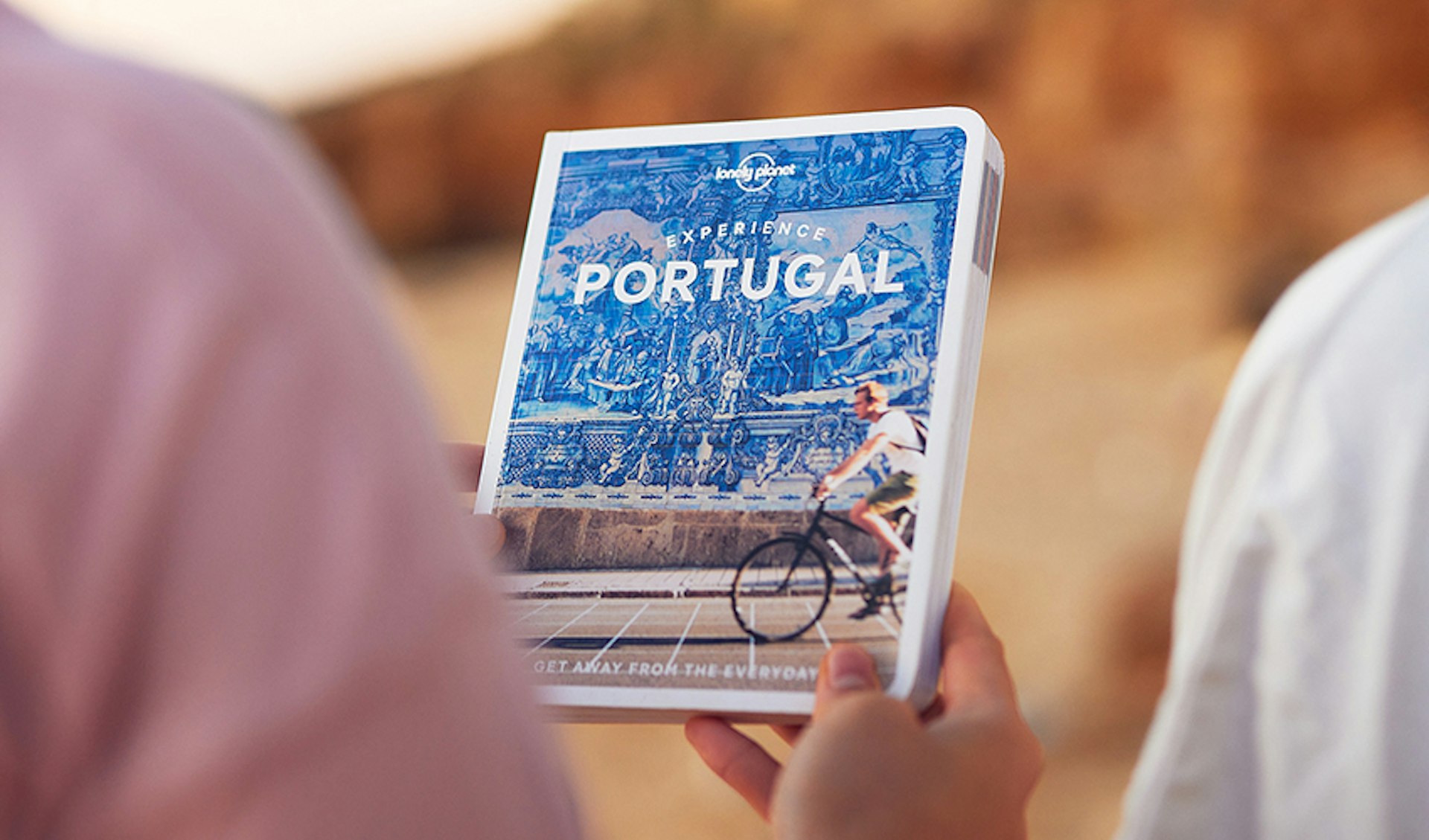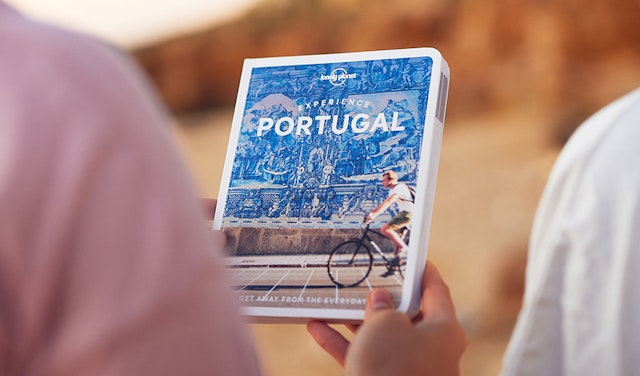The Algarve hits all the right notes when it comes to seaside getaways. Inviting beaches and great weather are the just beginning of a long list of the region’s many charms.
This southern pocket of Portugal also has castles, historic cobblestone centers and sleepy cliff-top villages overlooking wild stretches of coastline. Whether you’re traveling solo, heading off on a romantic getaway or seeking a child-friendly place with lots of activities on offer near the seaside, the Algarve has you covered. Below is a rundown of some top places to visit when planning your trip.

Sagres: best for edge-of-the-world views
The western-most town in the Algarve, Sagres has some of Portugal’s most spectacular scenery. At the centuries-old Fortaleza de Sagres, you can walk to the edge of sheer sea cliffs and watch the waves crashing far below while pondering the daring of Portuguese explorers who headed off into uncharted waters. According to legend, Sagres was where Prince Henry the Navigator founded his school for sailors (cartography, ship design, astronomy and of course navigation) back in the 15th century, ushering in the Age of Discoveries. Even more drama – some say the best viewpoint in the Algarve – lies just a few kilometers north at the Cabo de São Vicente, Europe’s southwesternmost point. There a lonely lighthouse overlooks the jagged wind-whipped cape.
These days, Sagres continues to look out to sea – often in search of great waves owing to the popular surf camps here, or perhaps with an eye toward leaping cetaceans on a dolphin-watching cruise. The village itself is smaller and quieter than towns in the central Algarve, with most of the action happening at terrace bars and restaurants along the main drag of Rua Comandante Matoso.

Faro: best for historical journeys
Many travelers fly into Faro and quickly depart for resorts to the east and west. Unfortunately, they’re missing one of the Algarve’s most intriguing towns, with a cobblestone center that’s packed with history. You can feel the hands of time spin backward while entering the walled medieval quarter beneath the neoclassical Arco da Vila. Up ahead the Sé (cathedral) lords over the town. Built in the 13th century (likely on top of a Roman temple), only a few original elements remain – the rest rebuilt in a mishmash of Gothic, Renaissance and baroque styles after the devastating 1755 earthquake. Climb to the rooftop for views over the town, then complete the time travel with a visit to Museu Municipal, a domed 16th-century landmark that was once the epicenter of the Jewish quarter.
Carvoeiro: best place for families with kids
Backed by whitewashed houses and sandstone cliffs, the beach of Carvoeiro is lapped by calmer seas (watched over by lifeguards), which makes it a great choice for families. Just uphill from the golden sands, the village has a walkable center dotted with outdoor eateries that will please kids and adults alike. A short distance from town, you’ll find some other stunning beaches, including Praia do Vale Centeanes, a perfect spot for some fun building sandcastles. Carvoeiro is also the launchpad for a wide range of tours, including boat trips to the Gruta de Benagil, a cathedral-sized sandstone cavern lit by sunlight streaming through a hole high overhead.
Silves: best for inland exploring
It’s hard to turn your back to the sea, given those golden sands and aquamarine views. But that’s indeed the best strategy if you hope to discover one of the Algarve’s most attractive towns. Just 15km (9.3 miles) from the ocean, the hillside settlement of Silves stretches along an idyllic bend of the Rio Arade and is home to the most picturesque castle in the Algarve. You can walk the ramparts of the citadel and wander through the exhibitions which describe the invasions and occupations over the centuries. Afterward, you can enjoy food and drinks on the terrace of Café Inglês. The best time to come is on Sunday afternoons when the cafe hosts live bands.

Lagos: best for dining and nightlife
One of the Algarve’s liveliest destinations, Lagos has a lot going for it. There’s plenty to see around town, starting with its historic architecture – baroque churches, a 17th-century fortress and the old town walls. The beaches nearby draw even more admirers, particularly Praia de Dona Ana, one of the Algarve’s prettiest beaches. When the sun goes down, Lagos’ allure only increases. Restaurants on the cobblestones and hidden in backyard gardens (like Michelin-listed Artistas) fill with diners feasting on fresh-off-the-boat seafood. The evening continues at microbrew bars and cocktail lounges dotting the narrow lanes. Take in the scene on the rooftop terrace of Bon Vivant or join the party people in the dance club below.
Tavira: best for cultural attractions
It’s easy to fall for Tavira, one of the Algarve’s most captivating towns. A former Roman settlement, Tavira wears its history with pride, with its medieval-esque old quarter, a hilltop castle and an elegant seven-arched span over the Rio Gilão aptly named Ponte Romana (Roman Bridge), which is in truth a 17th-century reconstruction of the original work by Ancient Roman engineers. You can learn about cultures of the past at Núcleo Islâmico, which houses a small collection of 11th-century pieces from the Algarve’s days under Islamic rule.
Tavira is also the best place in the Algarve to learn about Portugal’s deep-rooted music traditions. At Fado Com História, you can hear live fado (a soulful style of singing best described as ‘the Portuguese blues’) followed by a wine tasting – featuring vineyards of the Algarve of course.

Carrapateira: best for wild beauty
The west coast of the Algarve is a rugged landscape of cliff-backed beaches and wild vegetation. As part of the Costa Vicentina (which continues up into the Alentejo), this chunk of the Algarve has some delightful little towns where you can stay while exploring the pristine coastline. Peaceful Carrapateira lies on a headland near two photogenic beaches without a building in sight. Before heading out on coastal walks or surfing the waves, visit the Museu do Mar e da Terra da Carrapateira, an endearing ethnographic museum with photos depicting traditional lifestyles over the years in Carrapateira.
Galé: best place for couples
The quiet village of Galé is one of the best places in the Algarve for a romantic getaway. The town’s picturesque beach (Praia da Galé) is an obvious choice for a day on the waterfront, and even more secluded spots (like Praia das Salamitras) are a short hop from town. Galé has some lovely B&Bs and guesthouses, including the high-end Vila Joya, with its double Michelin-starred restaurant. Don’t miss the sunset from beach-facing Pedras Amarelas (be sure to reserve a table on the terrace). For a big night out, you can also head to nearby Albufeira, which is lined with restaurants and bars.



